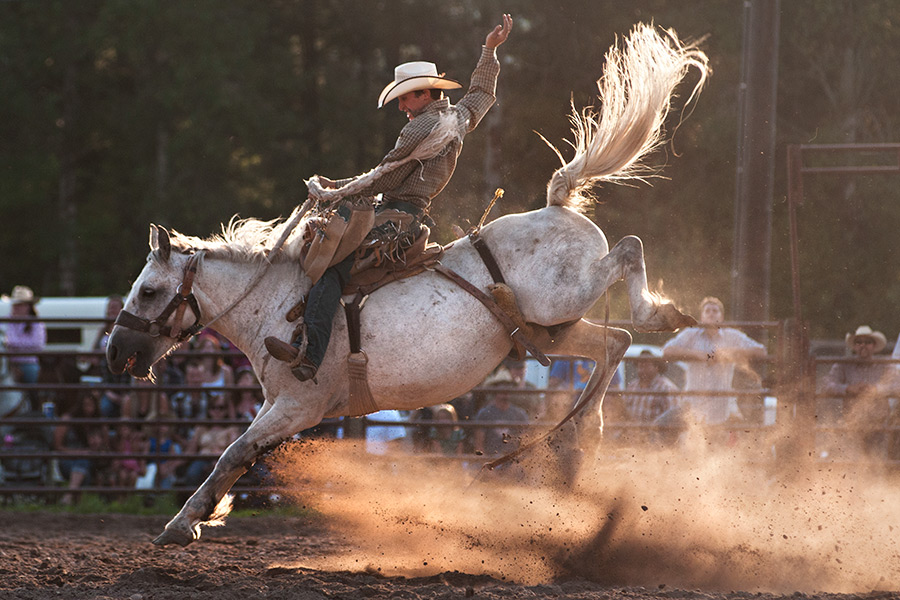Rodeo competition is rooted in the classic western lifestyle of men and women living on the range — roping calves, breaking in wild broncs and wrangling steers. Many of today’s rodeo events still follow the hardy tasks required of working cowboys in the American West. The first rodeos, documented in the mid 1800s, emerged as informal competitions in the West and northern ranges of Mexico, featuring cattle ranchers or cowboys testing their skills against one another. By the turn of the 20th century, these lively events were becoming widespread and grew in popularity.
Here’s a quick breakdown of some of the most popular events in today’s rodeos:
Bull Riding
The goal is both simple and insane: climb atop a 2,000-pound bull and hang on for dear life. Bull riding is dangerous and exciting, demanding intense physical prowess and courage. Like saddle bronc riding, participants may use one hand to try and stay atop an angry bull for eight seconds. Riders are judged on their ability to stay aboard the bull and the difficulty of the ride.
Barrel Racing
This race against time features a rider zipping around three barrels in a clover-leaf pattern as fast as possible. This is primarily a rodeo event for women, and it combines a horse’s athletic ability and a rider’s horsemanship, as both work together to safely and efficiently maneuver around three barrel obstacles. The fastest time wins.
Team Roping
The only true team event in the professional rodeo ranks, team roping requires a pair of skilled ropers — a header and a heeler — to quickly lasso a loose steer. The event originated on ranches where cowboys would wrangle cows that needed branding. This event is lightning fast and tests the marksmanship of each roper. The header fires first, trying to catch the steer around the horns. The heeler, in succinct timing, must then snatch the cow’s hind legs. If he catches only one foot, the team suffers a five-second penalty. After the steer is caught and the ropers face one another, the clock stops. The fastest time wins.
Steer Wrestling
Considered one of the most dangerous rodeo events, steer wrestling is an exciting race between a rider and a loose steer trying to escape. When the steer is released, the cowboy chases it before leaping off his horse and trying to wrestle the animal to the ground by twisting its horns. Once all four legs are off the ground, the judges stop the clock. Fastest time wins.
Saddle Bronc Riding
The pre-eminent event at a rodeo, saddle bronc riding is the ultimate test of a cowboy’s abilities. This event evolved from the days when cowboys needed to break in a wild horse by taming it from the saddle. Every move the rider makes must be synchronized with the movement of the horse, and this requires fluid technical skills and fortitude. A smooth, rhythmic ride is considered a better performance than a wild, uncontrolled effort. Riders hold a thick rein attached to the horse’s halter, and using one hand, the cowboy tries to stay secured in the saddle. If he touches any part of the horse or his own body with his free hand, he is disqualified. Judges score riders based on their horse’s bucking action, the cowboy’s control of the animal and the cowboy’s spurring action, which means where he places his spurs on the horse to maintain action. The goal, like bull riding, is to last eight seconds.
